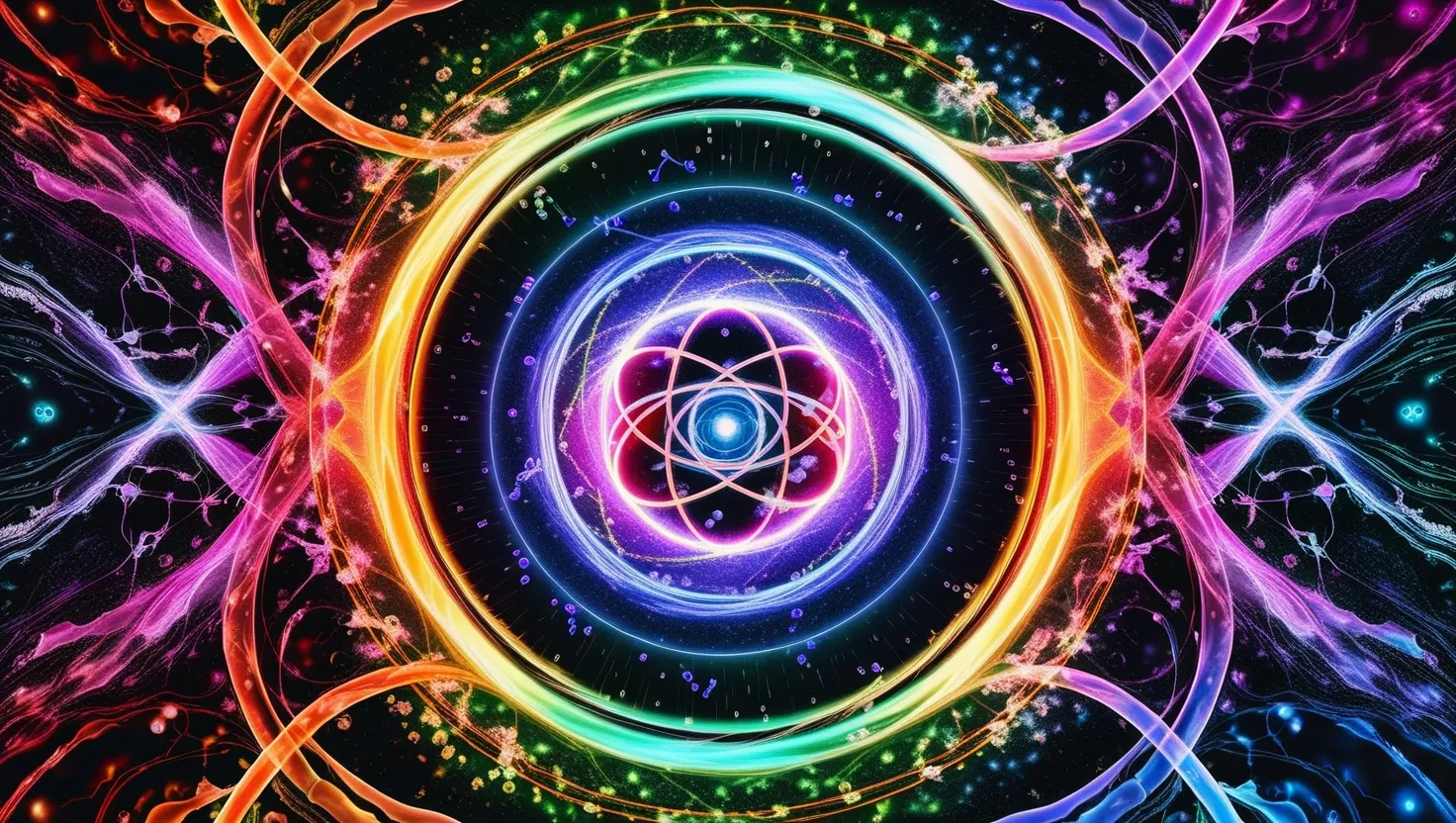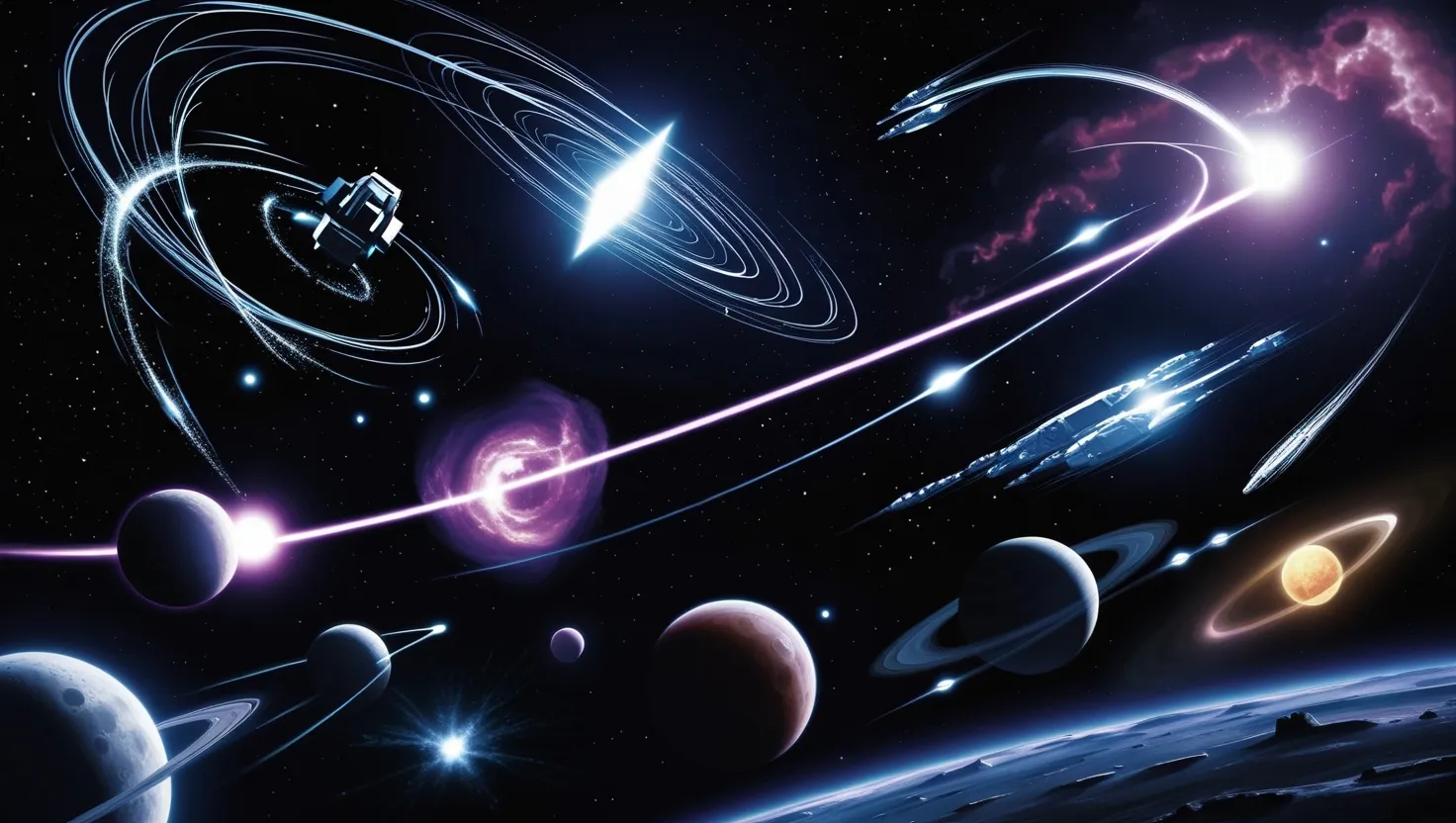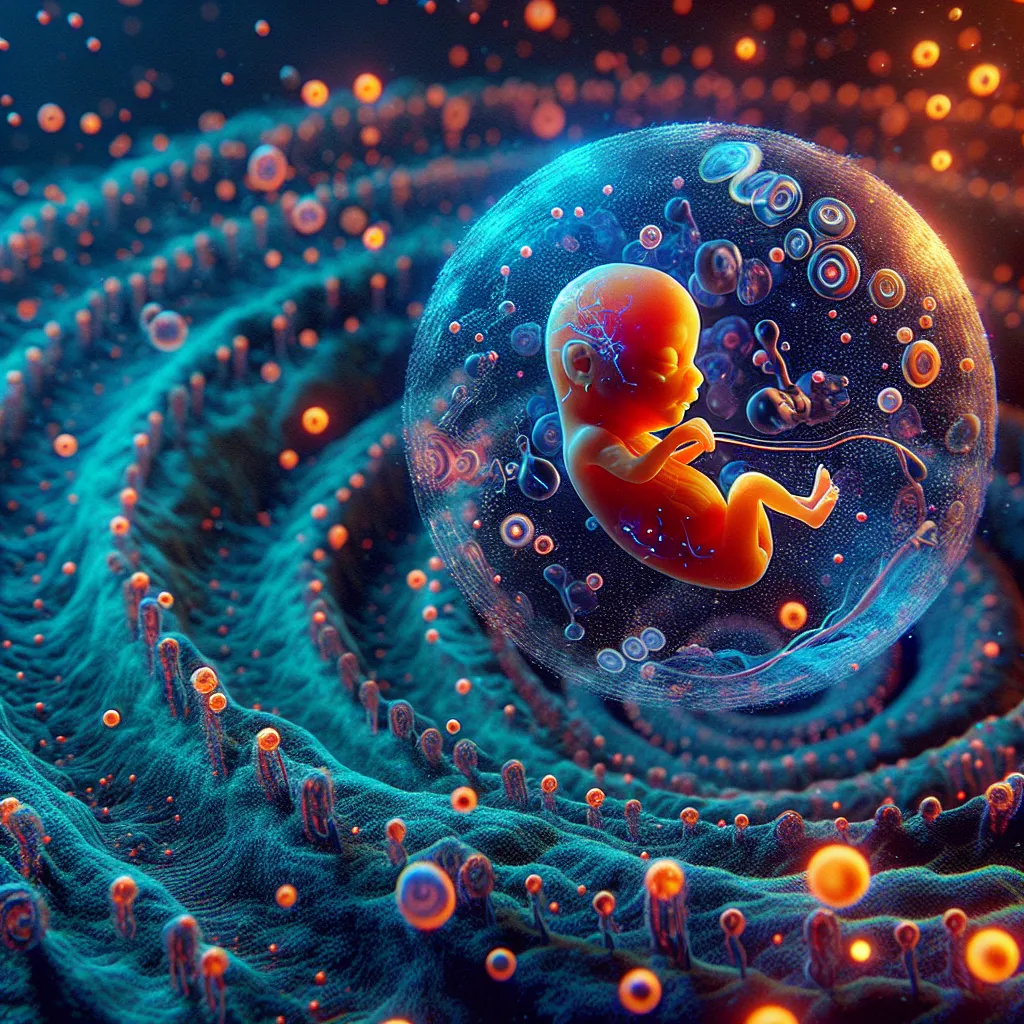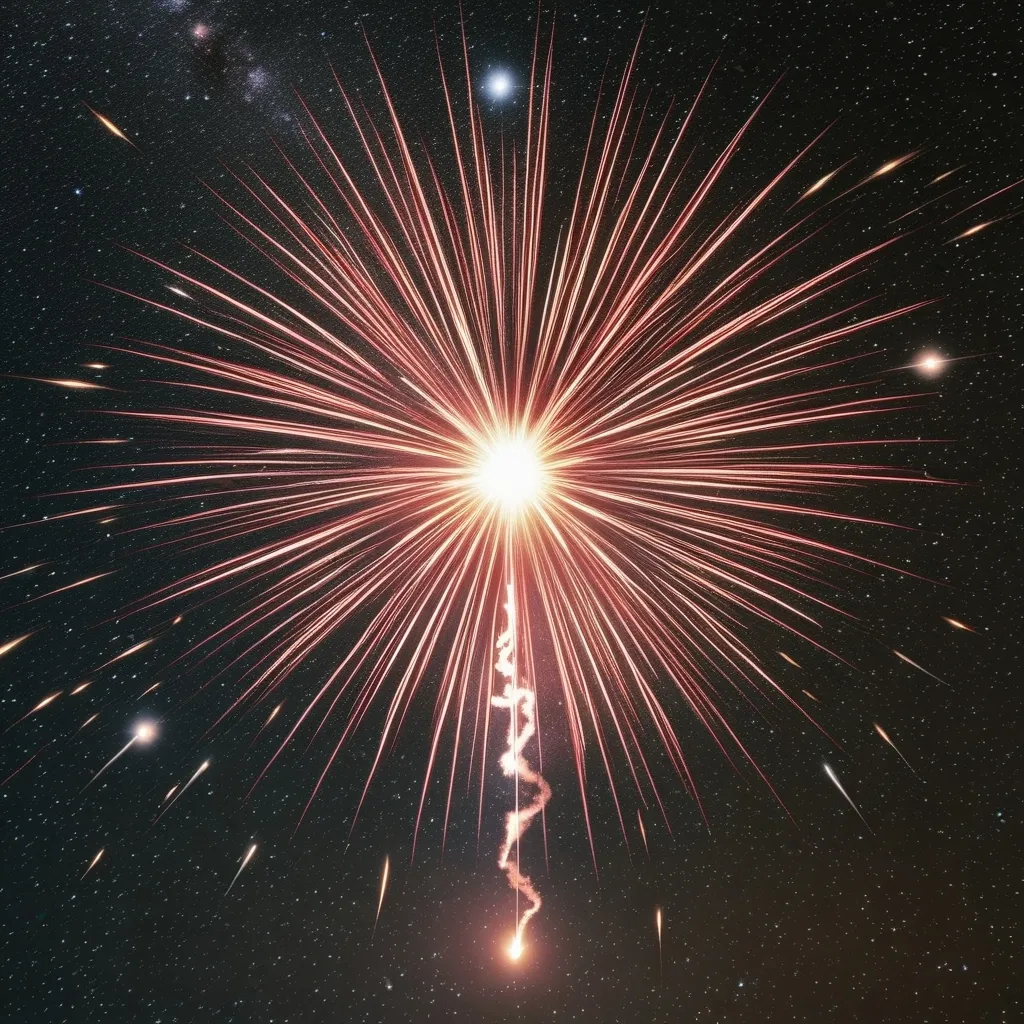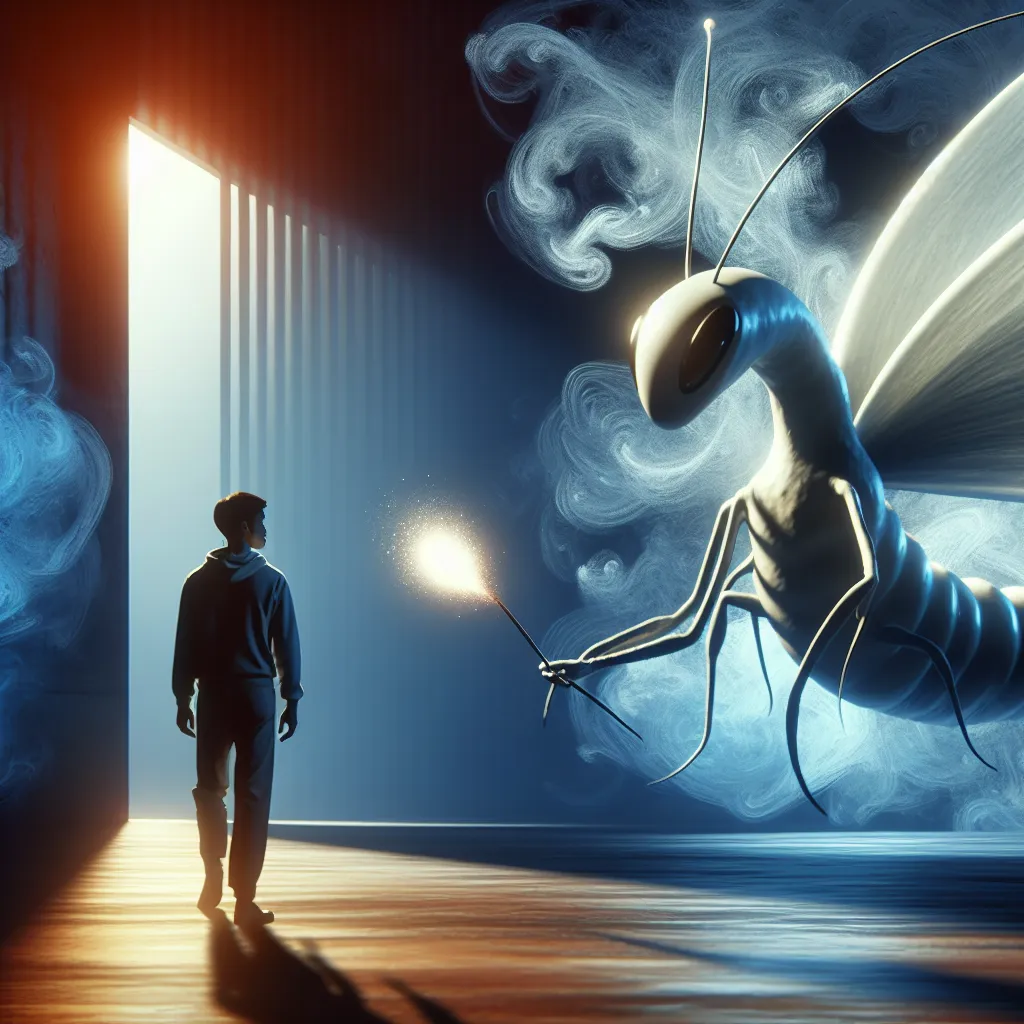Imagine a world where the smallest components of our universe, subatomic particles, are not just mere building blocks of matter, but vessels of ancient wisdom. This intriguing concept suggests that these tiny entities could be storing and transmitting information from the dawn of the universe, a idea that blurs the lines between physics and philosophy.
At the heart of this theory is the peculiar behavior of subatomic particles, particularly their ability to exist in multiple states and interact in ways that defy classical understanding. For instance, electrons can behave both as particles and waves, a phenomenon known as wave-particle duality. When unobserved, these electrons can pass through multiple openings in a barrier and interfere with each other, creating complex patterns. However, the moment they are observed, they behave like discrete particles, losing their wave-like properties[1].
This observation effect is not just a curiosity; it has profound implications. It suggests that the act of observation itself can change the behavior of these particles. In an experiment conducted by the Weizmann Institute, researchers used a tiny electronic detector to observe electrons passing through a barrier. The presence of this detector, even if it didn’t physically interact with the electrons, altered the interference pattern, demonstrating that the mere act of observation can influence the outcome[1].
But what if this influence goes beyond just physical behavior? What if these particles are carrying more than just their physical properties? The concept of quantum entanglement adds another layer of complexity to this discussion. When particles become entangled, the state of one particle instantly affects the state of the other, regardless of the distance between them. This phenomenon, described by Einstein as “spooky action at a distance,” raises questions about the interconnectedness of the universe and whether information can be transmitted through these entangled states[2].
Consider neutrinos, subatomic particles that interact very weakly with matter and can travel vast distances without being affected by their surroundings. Recent studies have shown that neutrinos can exist in a state of superposition, meaning they can have multiple identities simultaneously, even when traveling hundreds of miles. This ability to maintain a quantum state over such long distances challenges our understanding of how information is preserved and transmitted at the quantum level[3].
The idea that subatomic particles could be carrying ancient wisdom is both fascinating and speculative. It proposes that these particles, which have been around since the beginning of the universe, might be storing and transmitting information from the earliest moments of cosmic history. This concept is not entirely new; it resonates with theories in quantum mechanics that suggest the universe is fundamentally interconnected.
For example, the phenomenon of quantum ping-pong, where two atoms can bounce a single photon back and forth with high precision, shows how information can be exchanged between particles in a highly controlled manner. By positioning atoms at the focal points of an elliptical environment, similar to whispering galleries, scientists can ensure that the photon is transferred between the atoms almost certainly, demonstrating a level of quantum communication that is both precise and reliable[5].
But how does this relate to the idea of ancient wisdom? If we consider that the universe has been evolving for billions of years, and that subatomic particles have been present throughout this evolution, it’s possible to imagine that these particles have been imbued with information from various stages of the universe’s development. This information could be seen as a form of primordial knowledge, encoded in the behavior and interactions of these particles.
The second law of thermodynamics, which describes the increase in entropy over time, might also play a role in this narrative. At the microscopic level, electrons and other subatomic particles interact in ways that reflect this law. Their tendency to move towards lower-energy states could be seen as a microcosmic echo of the universe’s march towards entropy. This inherent directionality in the behavior of particles might be more than just a physical phenomenon; it could be a reflection of the universe’s own evolutionary path[4].
The concept of time itself becomes intriguing in this context. According to some theories, time can be defined by the interactions between electrons and their surroundings. Each dip in the electron’s energy state could be seen as a fundamental tick of time at the microscopic level. This quantum choreography might be sculpting the very flow of time, suggesting that our perception of time is deeply connected to the behavior of subatomic particles[4].
While this idea is highly speculative, it opens up fascinating possibilities. If subatomic particles are indeed carrying ancient wisdom, tapping into this information could reveal secrets about our cosmic origins and the fundamental laws of the universe. It suggests that we are surrounded by an invisible sea of knowledge, quietly shaping our reality at the tiniest scales.
However, it’s crucial to distinguish between this intriguing theory and the noise of quantum mechanics. The behavior of subatomic particles is inherently probabilistic, and interpreting their actions as carrying ancient wisdom requires a leap of faith. Yet, the allure of this idea lies in its potential to explain phenomena that are otherwise mysterious, such as flashes of insight or the origin of complex instincts in living beings.
In conclusion, the notion that subatomic particles might be vessels of ancient wisdom is a mind-bending theory that challenges our understanding of the universe and its fundamental fabric. While it remains speculative, it invites us to consider the interconnectedness of all things and the possibility that the smallest components of our universe hold secrets that could change our perspective on reality. As we continue to explore the mysteries of quantum mechanics, we may uncover more than just physical laws; we might discover a cosmic library written in the language of particles, waiting to be deciphered.
